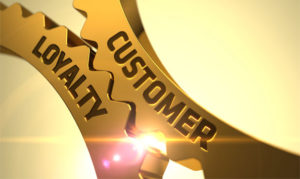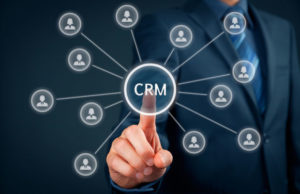CRM is often described as a discipline and a technology that will transform the entire business. Sales and marketing can get on the same page, support will have visibility into what sales and marketing are doing, and every interaction can be captured and used to create a complete and comprehensive view of every customer.
CRM has some weak links, however. In many businesses, those weak links are the members of the sales team.
Like any software, CRM is only as good as the data that goes into it. Much of that data is generated by the sales team. However, much of the CRM process — from the decision to buy it to the daily use of the data — works against the interests of salespeople. It’s as if the processes put in place to help sales understand the customer were designed to get in sales’ way.
If you want to realize real ROI from CRM, and if you want to ensure that data is flowing into your CRM system, you’ll need to remedy — or avoid — the classic pitfalls that make salespeople look at CRM as the enemy. Following are five of the biggest offenses that businesses commit against sales, which result in limiting the effectiveness of CRM.
1. Make Decisions Without Them
The CRM decision-making process is often approached as it would be for any other software purchase: A set of requirements is generated, IT gets involved, and the technology is picked by a small team of leaders. Unfortunately, that team, in most cases, includes no one who will use the CRM application in a daily fashion.
When that happens, why is there any surprise at pushback from sales? Without any say in the decision, the sales team’s valuable input about the interface, the information that the system displays on any given screen, the reporting formats, or the dashboards effectively is ignored — and the venting comes only after it’s too late.
In the worst of circumstances, this process creates a group of adversaries to the software and makes adoption a grueling, uphill battle.
Instead, make some of the front-line users of CRM part of the decision-making team. Let them test-drive options and point out usability issues and gaps in functionality that would make their jobs harder. Take their advice about interfaces that make it easy to get data into the system. Allow them to identify spots where integrations with existing systems will be beneficial. And, crucially, listen to their feedback. They have recent practical experience that most CIOs, CMOs, and vice presidents of sales lack.
Don’t forget that vendors know who signs the contracts for CRM purchases — not the front-line folks but the executives — so too often, the products are strong on the features that appeal to managers, like reporting. Having front-line users involved in the decision-making process helps ensure your pick will work for everyone in the selling process.
2. Introduce New Technology Without Training
The SaaS era has lowered the barrier to entry so that virtually any company can afford CRM. It’s also created a dynamic that has de-emphasized training. Applications are often sold as so intuitive no training is needed.
During the purchase process, that often leads buyers to scratch training off the list of purchases in order to save money. After all, the vendor has mentioned its ease of use repeatedly, so isn’t training an unnecessary expense?
In reality, even the best-designed and most intuitive CRM applications contain a lot of power that can be accessed only with specialized knowledge of the system. In all cases, sales people confronted with a CRM application they’ve never used recoil at the idea of spending an hour or two noodling around with unfamiliar software when they could be busy selling.
This is why training is so important: It not only helps salespeople become more adept at using CRM but also allows them to feed valuable data to the rest of the business from the first moments they use it.
Training allows salespeople to experience the new solution before using it with real data. It boosts their confidence in their ability to use CRM, and it allows them to capture customer data from the first moments they use the live application. It gives them fewer chances to decide the CRM application is too tough to use and helps eliminate opportunities for them to ignore it.
3. Use Data to Punish Them
Once they’re using CRM, managers will have new-found visibility into the sales team’s behaviors, good and bad. That will allow managers to work to replicate positive behaviors throughout the sales team and to coach employees to veer away from other behaviors.
Be careful with your coaching, though. Arming yourself with data from CRM and then using it in a heavy-handed way with your sales staff is an adoption killer.
If salespeople discover that the data they’re entering into CRM will become a weapon that managers will use against them, they’ll stop inputting it in real time. Why would you commit time to entering data to incriminate yourself? The result is spotty reporting from sales, an inaccurate view of sales performance going to sales managers, and a degradation of the ROI for the entire system.
If, as a manager, you feel the need to scream at a salesperson, don’t drag CRM into it. CRM should not be seen as the “sales department’s snitch.” It should be treated as a source of data for managers but not identified as the system that raises managers’ ire. If it’s seen that way by the sales force, they’ll track customer information in a more opaque way and make the manager’s job even more difficult.
4. Build In Blind Spots
When it’s implemented well, CRM isn’t just useful for landing new sales. It’s instrumental in helping to keep customers over the long haul — a haul that is becoming more lucrative as many industries move toward a more subscription-based model. However, that requires that everyone use the system — not just sales, but also marketing, customer support, and anyone else who impacts the ongoing customer experience.
Avoid blind spots that result in salespeople being surprised to hear news about their own businesses. For example, sales should know if marketing is promoting a discount, so they aren’t surprised when that discount is mentioned during renewals or initial sales.
An effort to extend a contract immediately after the customer has suffered prolonged service problems is not going to be as successful as a similar effort delayed until the service problems are resolved. Those service issues should be noted in the customer record that sales can access.
When CRM is used as a tool of sales — and nothing more — salespeople can be placed in uncomfortable and embarrassing situations, which does not make them fans of the technology.
5. Botch Integration
One of the benefits of having front-line users involved at the early stages of a CRM purchase is that they can see more readily the various systems that could and should be integrated into CRM — possibilities include marketing automation, ERP, lead management and alerting tools, analytics tools, and any of a myriad of others.
Failing to spot needed integrations from the outset does greater harm than slowing the pace of integration. It puts the entire CRM implementation in danger as those integrations are planned and executed because in the run-up to any integration work, much of the transfer of data will need to be done manually. That invites errors, redundancy — and, eventually, a desire to ignore CRM.
SaaS makes it easy to get CRM; it also makes it easy to cut the CIO out of the buying process, which is potentially very dangerous. Ensure that the needed integrations are well understood before implementation begins, and get the IT pros involved early.

























































